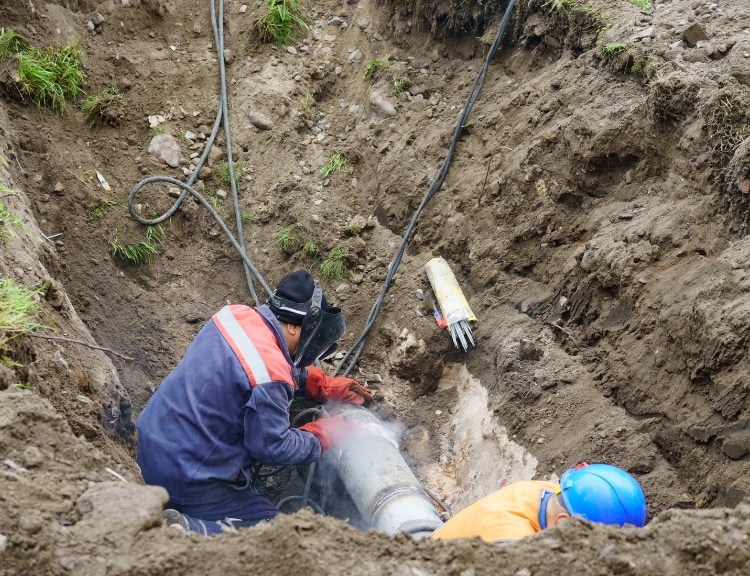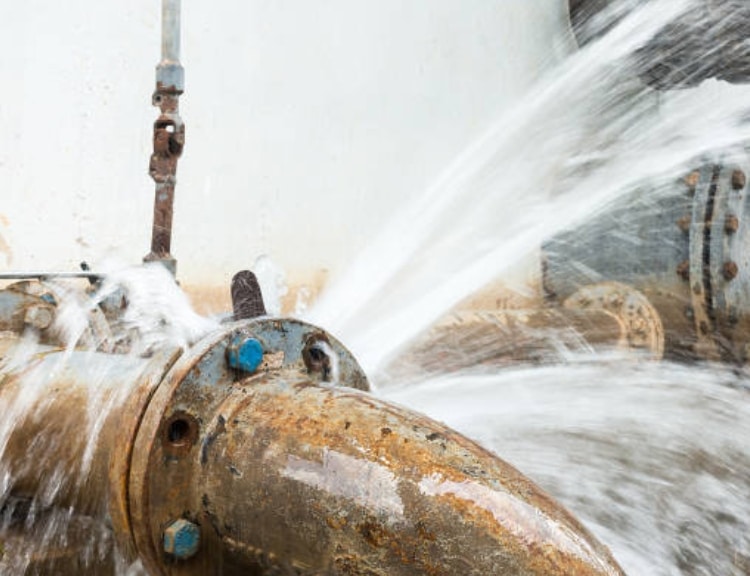Water main leaks & breaks are more than just inconvenient disruptions—they are costly events that strain resources, disrupt communities, and expose vulnerabilities in our aging infrastructure. Effective water main risk management has never been more crucial. With the increasing frequency and severity of water main breaks, it is more important than ever that water systems take proactive measures to assess and improve their infrastructure now. The urgency is highlighted by the latest findings from the Water Main Break Rates in the USA and Canada: A Comprehensive Study.
Read on to explore the five key takeaways from this study that underscore why proactive measures are essential:
Average 4.5 water main breaks per 100 miles of pipe
Every year, water systems in the USA and Canada experience an average of 4.5 water main breaks per 100 miles of pipe. Regular and proactive maintenance, as well as infrastructure upgrades, are necessary to mitigate these frequent incidents and ensure the reliability of water services.
$2.8 billion annual cost of water main breaks in the USA and Canada
The financial burden of water main breaks is staggering, with an estimated annual cost of $2.8 billion. This figure includes direct repair costs, water loss, and associated disruptions. Investing in preventive measures can significantly reduce these costs, safeguarding both economic and community well-being.
33% of pipes are >53 years old, which is the average age of main failure
While water mains can fail at any age, water mains over 53 years old are 2x as likely to fail compared to newer pipes. As these systems continue to age, the risk of failure will only increase.
Only 44% of utilities conduct condition assessments
Less than half of utilities are taking proactive measures to understand the state of their water main infrastructure. Without this assessment, utilities are unlikely to have a clear understanding of the state of their systems or the risks they face.
Only 20% of utilities have a target break rate
Simply having a target break rate suggests that a utility is engaged in some amount of system risk assessment and is trying to balance the efficiency of proactive vs reactive maintenance; among these utilities, the average target break rate at which utilities replace pipe is 21 breaks/100 mi-yr. However, only 20% of utilities reported having a target break rate. This suggests that the majority of utilities are relying on reactive maintenance practices rather than proactive assess-maintain-replace programs.
Proactive Condition Assessments and Predictive Modeling
Given these findings, it’s clear that water main risk management should be a top priority for water systems. Conducting thorough condition assessments of your infrastructure is the first step towards understanding the state of your system and identifying key risks.
Utilities can implement predictive modeling to help forecast potential break incidents based on historical data, pipe conditions, and environmental factors. This approach allows for targeted interventions before breaks occur.
Unlock the power of predictive modeling with BlueConduit’s probability of failure (PoF) solution for water mains. We utilize sophisticated algorithms and predictive models to assess the health and condition of water mains with unparalleled precision. By analyzing a comprehensive range of factors in your data and external data sets, including weather, soil type, and parcel data, we provide you with actionable insights into the likelihood of leaks and failure in your water mains network.
Investing in these proactive measures allows water systems to grow more resilient, protecting community resources and ensuring the reliable delivery of safe drinking water. Ready to get started — schedule a meeting.
Explore the full report for deeper insights and actionable strategies to address water main break challenges: https://digitalcommons.usu.edu/water_rep/682/






